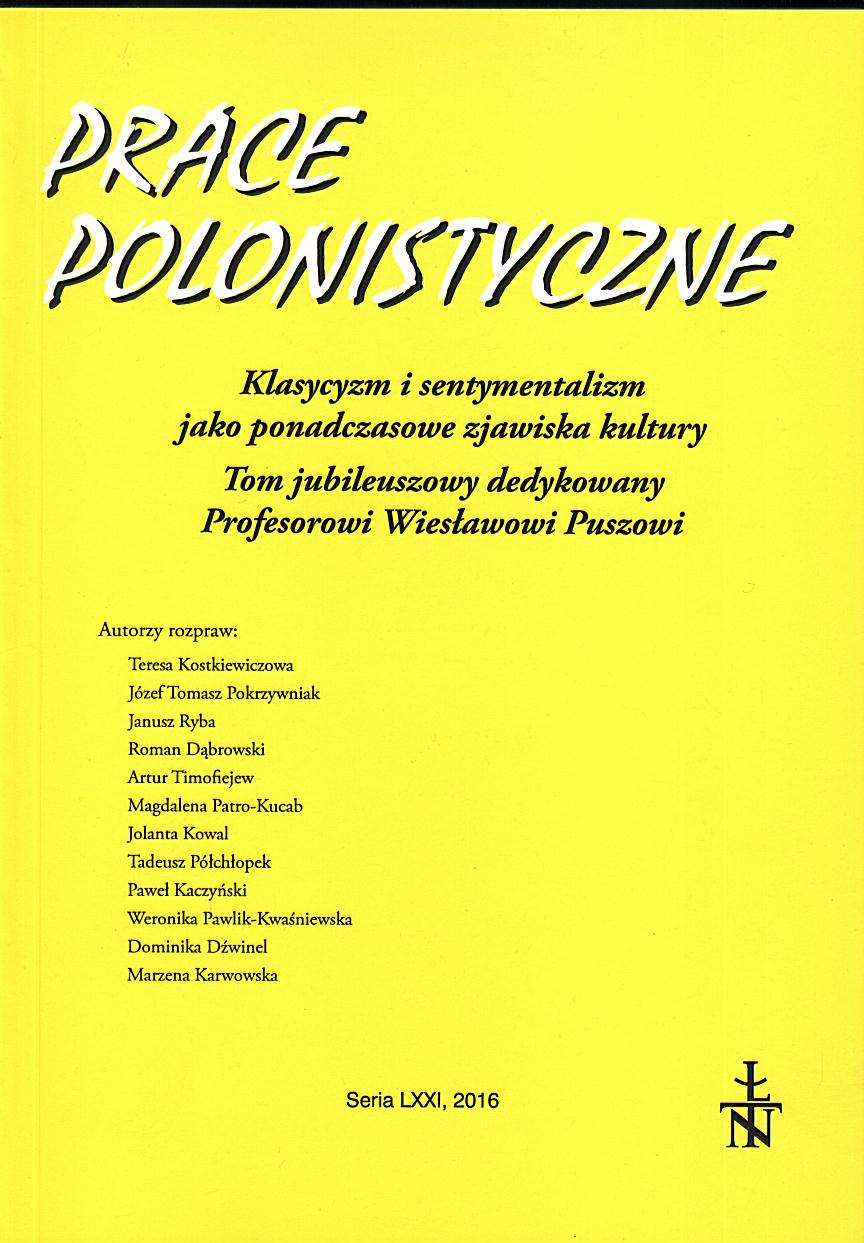Motyw rokokowego tańca w „Dukli Amaliowej” Mirona Białoszewskiego
The rococo dance motif in “Dukla Amaliowa” by Miron Białoszewski
Author(s): Weronika Pawlik-KwaśniewskaSubject(s): Language and Literature Studies, Polish Literature
Published by: Łódzkie Towarzystwo Naukowe
Keywords: rococo; aesthetics; dance; relishing; anxiety
Summary/Abstract: The article analyses the Rococo dance motif in the context of Dukla Amaliowa (1952–1975) by Miron Białoszewski. Research issues are presented on a binary opposition basis. I use 18th century literature as the starting point for an analysis of 20th century poetry. The objective of the article is to demonstrate ways of continuing and reassessing the Enlightenment tradition of Rococo. I examine phenomena such as hybridity, movement and dance, which are typical for the analysed movement, as a subject of the author’s interpretation. As far as Białoszewski’s work is concerned, dance reflects the speed of changing states. It becomes the metaphor of human life. Losing oneself leads to awareness of the upcoming tragedy. Transitions between states are smooth. The work contains references to a pair of concepts – relish and anxiety – which are defined as potential poles of aesthetic experience. The poet plays with symbols and the notion of Rococo. I consider Dukla Amaliowa a materialisation of the aesthetic assumptions of the movement.
Journal: Prace Polonistyczne
- Issue Year: 2016
- Issue No: 71
- Page Range: 157-165
- Page Count: 9
- Language: Polish

